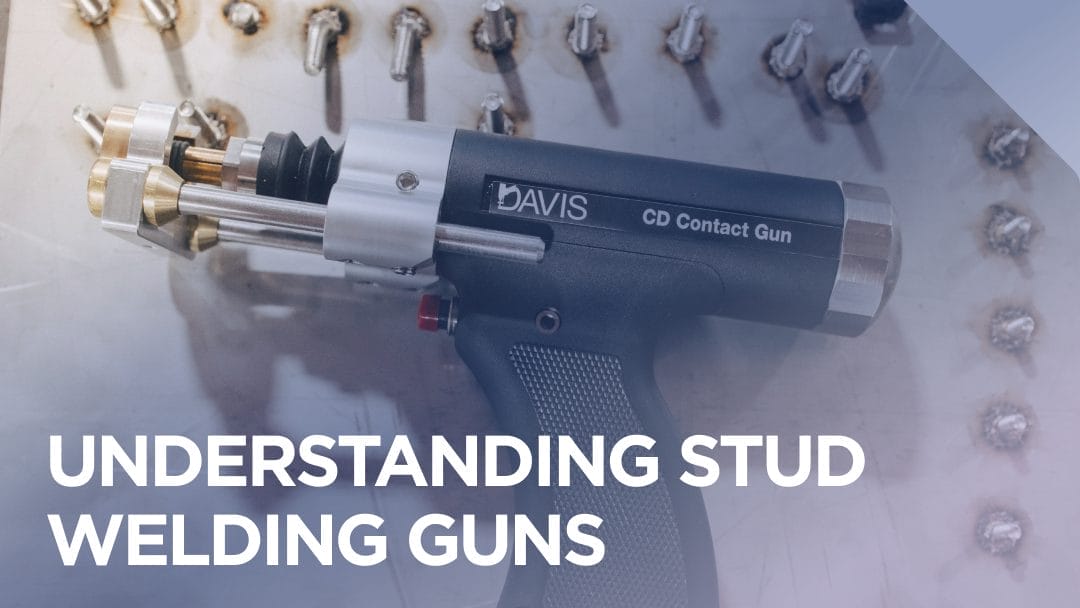Think about a chef’s knife collection. While all knives can cut, each type serves a specific purpose – from the precise paring knife to the robust cleaver. Stud welding guns follow a similar principle. Each type excels in particular applications, and choosing the right one can mean the difference between struggling with a task and completing it effortlessly.
The Foundation of Stud Gun Selection
Before we explore specific gun types, let’s understand what makes a stud welding gun effective. At its core, a stud gun must accomplish three crucial tasks: precisely position the stud, deliver the right amount of electrical current, and maintain proper alignment throughout the weld cycle. How well a gun performs these tasks in your specific application determines its suitability for your work.
Understanding Different Stud Gun Types
Let’s explore each type of stud welding gun, understanding not just what they do, but why they’re designed the way they are.
The Contact Gun: Your Versatile Workhorse
Imagine having a reliable all-purpose kitchen knife that handles most daily tasks effectively. That’s what the contact gun represents in stud welding. This standard tool excels with mild and stainless steel studs, offering a balance of features that make it the go-to choice for many applications.
What makes the contact gun special:
- Its trigger mechanism provides precise control over the weld cycle
- Adjustable legs accommodate different stud lengths, like having an adjustable cutting board
- The ergonomic design reduces operator fatigue during extended use
- Built-in microswitches ensure consistent timing for each weld
The Insulation Gun: Mastering Specialized Tasks
Think of the insulation gun as a specialized tool, like a bread knife designed specifically for cutting bread. While it might look similar to other guns, its design optimizations make it perfect for installing cup head pins in insulation applications.
Key design elements include:
- Extended reach capabilities for accessing broad surfaces
- Precise control for consistent pin placement
- Durability to handle the repetitive nature of insulation work
- Features that prevent damage to delicate insulating materials
The Gap Gun: The Aluminum Expert
Working with aluminum requires a delicate touch, much like handling delicate pastries requires a special pastry knife. The gap gun provides this specialized capability through unique design features that protect soft aluminum while ensuring strong welds.
Why the gap gun excels with aluminum:
- Controlled arc initiation prevents material damage
- Precise timing mechanisms suit aluminum’s unique properties
- Specialized settings account for aluminum’s thermal characteristics
- Versatility to handle other metals when needed
The Mini Gun: Master of Tight Spaces
Consider trying to cut vegetables in a cramped corner of your kitchen – you’d need a smaller, more maneuverable knife. The mini gun serves this role in stud welding, offering precision in confined spaces where larger guns simply won’t fit.
Design advantages include:
- Compact size for accessing tight spaces
- Lightweight construction for improved control
- Precise positioning capabilities
- Maintained power despite smaller size
The Extension Gun: Reaching the Unreachable
Like having an extension handle on your kitchen tools to reach high shelves, the extension gun provides access to otherwise inaccessible welding locations. Its six-inch shaft extension makes deep recesses and narrow spaces accessible without compromising weld quality.
Notable features:
- Extended reach without sacrificing control
- Automatic triggering for easier operation in awkward positions
- Balanced design despite the extended length
- Maintained precision at greater distances
Matching Guns to Applications: A Practical Approach
Choosing the right stud welding gun involves understanding both your immediate needs and potential future requirements. Consider these factors:
Material Considerations
Your base material and stud type form the foundation of your choice:
- Steel applications typically work best with contact guns
- Aluminum projects require the specialized capabilities of gap guns
- Thin or delicate materials might need the precise control of a mini gun
Access Requirements
Evaluate your typical welding scenarios:
- Open, easily accessible surfaces suit standard contact guns
- Tight spaces or corners might require mini guns
- Deep recesses call for extension guns
- Large insulation projects benefit from insulation guns
Production Volume
Consider your daily welding volume:
- High-volume production might benefit from more robust gun models
- Occasional use might allow for more basic options
- Mixed applications might require multiple specialized guns
Optimizing Your Stud Gun Performance
Once you’ve selected the right gun, maintaining optimal performance requires attention to several factors:
Regular Maintenance
Treat your stud welding gun like any precision tool:
- Clean contact surfaces regularly
- Check cable connections and conditions
- Verify trigger mechanism operation
- Inspect adjustable components for wear
Operator Training
Proper technique enhances gun performance:
- Maintain consistent positioning
- Use appropriate pressure
- Follow recommended duty cycles
- Practice proper cable management
Making Your Selection
Choosing the right stud welding gun shouldn’t feel overwhelming. Consider these questions:
- What materials will you primarily work with?
- What access challenges do you face in your typical applications?
- What production volume do you need to maintain?
- What special requirements might your projects have?
Let us help you evaluate your needs and select the perfect stud welding gun for your application. At Davis Stud Welding, we understand that every project has unique requirements, and we’re here to ensure you have the right tools for success.
For ongoing insights into stud welding equipment and techniques, follow Davis Stud Welding.
Ready to find your ideal stud welding gun? Contact us at 1 (855) 720-2977 or email info@davisstudwelding.com to discuss your specific needs.

